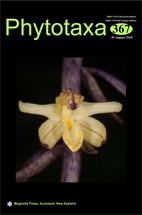Abstract
Taxonomic descriptions of Iranian and Turkish Hesperis (Brassicaceae) species are generally insufficient and partly incomplete, which makes the species delimitation ambiguous. In order to clarify species circumscription, we scored 57 morphological descriptors (MDs) in 121 operational taxonomic units (OTUs) of Hesperis from Iran and Turkey and performed a multivariate analysis. The dendrogram was created from Gower’s distance matrix using Unweighted Pair Group Method with arithmetic mean (UPGMA) algorithm. The dendrogram clearly separates the 121 OTUs of Hesperis into five main phenons, which significantly deviate from the classical taxonomic treatment (sectional assignments) of the genus. Similar distinct delineation among the five phenons was revealed by a Principal Coordinate Analysis (PCoA), highlighting the resolving power of the multivariate analyses of quantitative and qualitative morphological characters. While there were significant variations among the OTUs for 57 MDs, the most distinctive morphological descriptors delimiting the phenons were estimated to be fruit, petal, stem, and leaf by a de-trended correspondence analysis (DCA). We also present a comparative discussion between the classical taxonomy and the delimitation of taxa revealed in our study.

